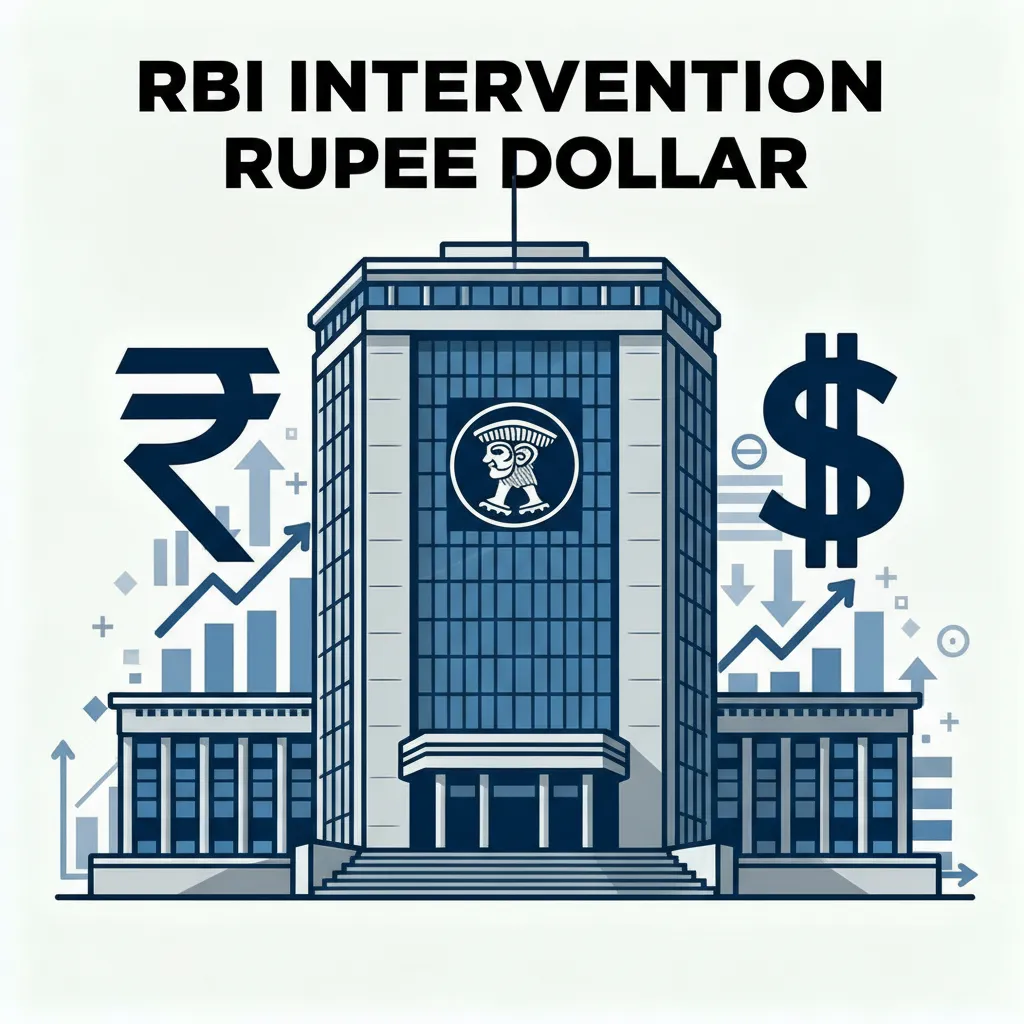Inside RBI’s $7.7 Billion Move: Why the Central Bank Intervened as the Rupee Breached ₹88

In August 2025, the Indian rupee slipped to around ₹88.20 per US dollar, a noteworthy weakening of about 0.68% for that month.
That breach of the ₹88 mark triggered renewed concerns about external vulnerabilities: rising dollar demand, inflation import risks, and the impact of global trade‐and‐tariff uncertainties.
The RBI’s monthly bulletin revealed that, in response to the decline, the central bank did not purchase any US dollars in the spot market in August, but sold a net $7.7 billion.
For comparison, the net sale in July was about $2.54 billion.
The bank’s outstanding net forward‐sales position (i.e., commitments to sell foreign currency in the future) was reduced to around $53.36 billion at end-August, down from ~$57.85 billion at end-July.
What the RBI Did & Why
What it did:
In the spot market, the RBI sold $7.7 billion in August, with no purchases.
It reinforced forward‐sales exposure, though the forward book shrank slightly.
Taken together, this is a fairly sizable central‐bank intervention to stem further depreciation of the rupee.
Why it did it:
A depreciating rupee raises import costs (especially energy, commodities) and can feed domestic inflation.
Sharp one-way moves can trigger speculative bets and volatility, which the RBI typically tries to contain.
India’s macro‐framework (trade, capital flows, external debt) is more comfortable when the currency is stable or predictable.
The timing - breach of ₹88, heightened global risk-likely prompted a more proactive defense.
Implications
Short-Term Effects:
By intervening, the RBI likely dampened market fears of a steep slide in the rupee, improving sentiment. As of the data point, the rupee was quoted around ₹87.93 following the intervention.
Intervention uses up or draws on foreign‐exchange reserves (or imposes forward commitments) - so there's a cost.
Liquidity in the domestic system may be tighter because FX intervention often withdraws rupees (as foreign currency is sold). Indeed, analysts note that such interventions have dampened the efficacy of recent liquidity boosting efforts.
Medium & Longer‐Term Considerations:
Repeated large interventions might reduce the flexibility of the central bank if reserves come under pressure.
A shrinking forward book (i.e., lowering future obligations) is positive, but still the forward exposure remains sizable - over $50 billion. That creates rollover risks.
If the rupee continues to weaken, the RBI might face a choice: larger interventions (costly) or allowing more depreciation (with inflation/trade consequences).
For exporters, a somewhat weaker rupee can be a plus (improved competitiveness), but the real effective exchange rate (REER) metric shows the rupee has indeed become somewhat more competitive - recent data shows REER around 97.6 (indicating undervaluation relative to baseline) after a slide.
What to Watch Going Forward
Further FX interventions: Will the RBI keep up this pace of dollar sales if the rupee comes under renewed pressure (particularly from global dollar strength or policy shocks)?
Reserves & forward book: How large are India’s FX reserves (room to maneuver) and will the central bank further reduce its net forward commitments?
Inflation and interest rates: If the rupee weakens more, imported inflation may rise, potentially forcing the RBI to maintain higher interest rates.
External flows: Capital flows (portfolio, FDI) are critical. A currency under pressure can discourage inflows; conversely, improved sentiment helps. For August, net FDI turned negative for the first time in the fiscal year, which adds another dimension of risk.
Trade/tariff environment & global dollar cycle: The rupee is vulnerable to global factors - e.g., US Fed policy, dollar strength, commodity shocks, geopolitical / trade shocks. The RBI’s intervention is a buffer but not a full shield.
Domestic policy trade‐offs: The RBI must juggle currency stability, inflation control, growth support, and banking system liquidity. As noted, large FX interventions can tie up liquidity which might otherwise support credit.
A Balanced Take
The RBI’s move to sell ~$7.7 billion in August spot FX is a clear signal that it is ready to actively defend the rupee when needed. It underscores both the risks the Indian economy faces in a volatile external environment and the willingness of the central bank to deploy ammunition. At the same time, such interventions are neither cost-free nor indefinitely sustainable without consequence.
For stakeholders - investors, importers/exporters, consumers - the move provides some comfort that the rupee’s slide is being managed. But the underlying pressures (global dollar strength, trade uncertainties, imports burden, capital flow swings) remain. Thus, the intervention can be seen as stabilization rather than decoupling the rupee from global currents.
In short: The RBI did the right thing as per its mandate of maintaining currency stability and guarding systemic risk - but the broader structural and external challenges mean the rupee’s path remains dependent on more than just central‐bank action.









